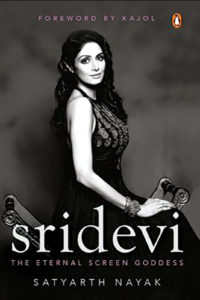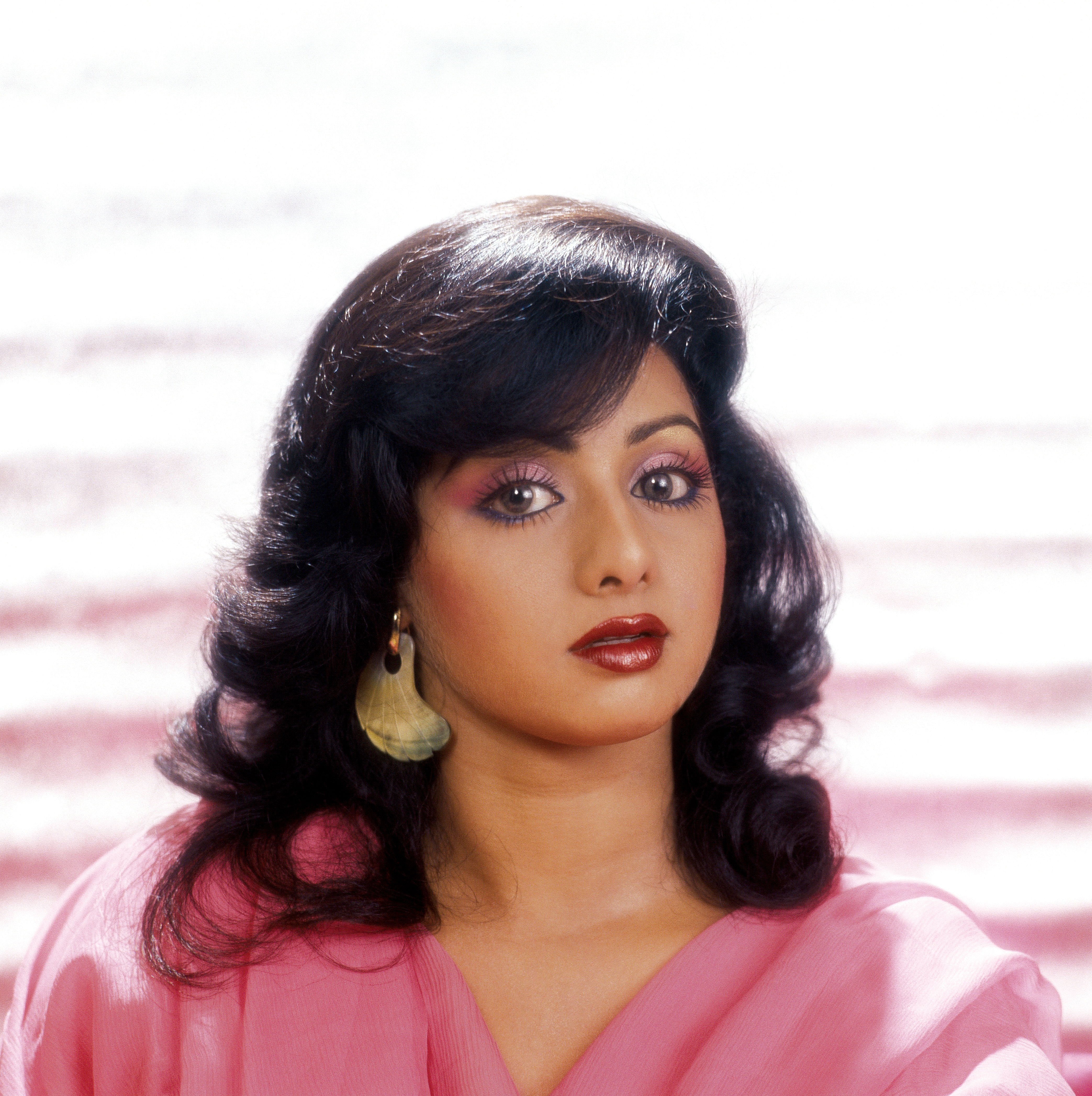Satyarth Nayak’s book on Sridevi celebrates both the phenomenon and the person she was, and gives us an insight into the world of the legendary actor
“A ZANY chorus of Tathaiya Tathaiya Ho blared from the speakers. A bunch of garishly dressed dancers bopped before the camera. Sridevi twirled, Jeetendra whirled, surrounded by pots, feathers and arches. While Jeetendra was wearing his patented white shoes, Sridevi pirouetted barefoot on that scorching sand. As the sun climbed higher, the beach burned whiter, blistering her soles. But she was indomitable, her footwork turning even more exquisite as she generated one magical move after another. The actress was perhaps determined to conquer Bombay,” says Satyarth Nayak, an author and screenwriter based in Mumbai, in his latest book Sridevi: The Eternal Screen Goddess.
The book is a biography of the late megastar Sridevi. This is her journey from child star to one of our greatest movie luminaries who changed the narrative of Indian cinema once and for all. Often known for her mysterious aura, various unknown aspects of the actor’s life have unfolded beautifully in the book.
One gets to see various shades of the actor in various phases of her life, which makes it an intriguing read. Here are some excerpts from the book, which gives an insight into the world of the diva:
BORN TO SHINE
The theatre had come alive. Halfway through the film—during the intermission—Tamil chartbusters were blaring from the speakers. A four-year-old girl had got up from her seat and was dancing in the aisle. Her face cherubic, eyes luminous and feet frolicking. Her parents gaped as the audience cheered her on.
Oblivious to all this, the girl danced with abandon, casting a shadow on the blank cinema screen. Sharing this childhood memory with me in our only meeting in 2012 at the Delhi premiere of English Vinglish, Sridevi had said, ‘I danced and danced until someone pulled me back.’ And yet, in a 1985 interview with Cine Blitz, Sridevi also described her younger self in these words: ‘I was a very shy and lonely child. I hated crowds. The minute I saw more than three or four people in the room, I would run and hide behind my mother’s pallu.’
Reconciling these two childhood versions of Sridevi, so seemingly incompatible with each other, is difficult, but perhaps it was this fascinating dichotomy that spun the aura and mystique around her. People close to the actress vouch that she was not one or the other; she was both. Both the personas merging into one. That girl withdrawing behind her mother’s pallu could also streak through the silver screen like a bolt of lightning.

LOST IN THE LIMELIGHT
Sridevi turned twenty in 1983; her teen years, like her childhood, lost in playing others on-screen. The camera was still her closest companion besides her family, the camera still seeing much of what was invisible to the human eye. One wonders what secrets the two must have shared through those years. What adolescent dreams, what teenage pangs, how much laughter and how many tears. As a star, she was at her brightest.
Cine Blitz reported the kind of craze she was generating in a 1983 write-up: ‘Her popularity has to be seen to be believed. Andhra towns like Vijayawada, Rajahmundry and Vishakhapatnam virtually come to a standstill if she happens to be shooting there.’ Suhasini adds that the actress’ family continued to be a pillar of support for her: ‘I remember Sridevi had fractured her foot during a shoot and her uncle would literally carry her in his arms back and forth on the sets. A loving family and a flourishing career, she was relishing it all.’
However, sometimes the more luminous a star turns, the more obscure he becomes in real life. The performer in Sridevi had become so all-consuming that there seemed little room for the person she was.
THE OTHER SIDE
Opening up in this (with Cine Blitz) interview, she also disclosed her childlike vulnerable self: ‘I am a hypersensitive and emotional person. My family tells me that I should toughen up and try not to get hurt so easily. I’m a total introvert. If I get hurt, I can’t even confide in my sister. I toss and turn the whole night and the next day my face is all red and swollen.’ That pent-up pain was perhaps the reason behind the nightmares when she fell asleep: ‘Most of the time, I dream of horrible things like ghosts and phantoms. Of late, I have repeatedly been having a dream of being surrounded by snakes. And I wake up very frightened. I then go and sleep with my mother, holding her hand. Maybe it’s because I see a lot of horror films.’ But once in a while she would encounter a blissful vision: ‘My favourite dream is one in which I see a very handsome man dressed in white who comes towards me and kisses me gently. And when we kiss a transformation takes place, and we are in bridal clothes. God, he’s the most handsome man I’ve ever seen!’
The magazine asked if any man in real life had ever come close to this fantasy. Pat came the reply: ‘I am crazy about Sylvester Stallone. He is the sexiest man I have ever come across. His voice gives me goose flesh. God, even when I talk about him, I can feel something happening to me. My body tingles all over. I have never been attracted to any man like this. Yes, if he proposes to me I will marry him without a second thought.’
She also revealed a few likes and dislikes: ‘I love eating. It’s one of my greatest joys. I love wearing heels. But sometimes I can’t because all my heroes are not tall enough. I hate wearing jeans. Once, my sister forced me to wear jeans to a party. I was so uncomfortable that I kept squirming. Someone asked me if there were ants in my trousers!’
MAGIC ON SCREEN
All Bollywood superstars must have that one solo chartbuster that forever becomes synonymous with them. For Sridevi, it happened in Mr India with ‘Hawa Hawai’. The song features a staple 1980s filmy situation where the heroine infiltrates the villain’s den under false pretences, but Sridevi turns this cliché into a cult. As the song explodes on-screen, the actress literally descends upon earth like a goddess in gold. The prelude is vintage Sridevi as she starts to ad-lib nonsense such as King Kong, ping pong, Honolulu and Mombasa. You gape at her elastic face altering with every word, her gestures varying with every phrase. That Sridevi performs this gibberish with such affection again affirms that no matter what the material, she could do magic with it.
BREAKTHROUGH
Sridevi ended 1992 by making a smouldering appearance on the December cover of Filmfare with the caption ‘Dangerous’. When the magazine asked if she had ever assessed herself after being an actress for over two decades, she replied with the thrill of a newcomer: ‘I haven’t. Because I still have a lot to learn. I may have been in show business ever since I was four but I feel that I’ve only just arrived. For an actress, there can be no beginning, no end, she has to keep going, take on roles.’
Following this mantra, Sridevi had chalked up eight box-office hits in three languages in the previous seven years alone—one in Tamil, three in Telugu and four in Hindi. Her sway over the three largest film industries of the country was unrivalled. Her status was bigger than the biggest heroes, her pay check fatter, her roles fleshier. There had been female superstars before, who ruled only Hindi cinema or who dominated only Tamil and Telugu box offices. No actress so far had become number one in three industries simultaneously. No star had wielded such pan-Indian appeal—not even Amitabh or the Khans, not even Rajini or Kamal, not even Chiranjeevi or Nag, Mammootty or Mohanlal. No male actor, despite all the gender privileges, had achieved what the Mai of Bollywood had. The media down the years had adorned her with various tags but Sridevi had now become something beyond all that. She had become India’s first female superstar.
IN HER MEMORY
‘Everything happened too early for Sridevi,’ Pradhan agrees. ‘She started acting too early, became a heroine too early, grew up too early and left us too early.’ Mayank Shekhar believes that this sudden exit will only further amplify Sridevi’s aura: ‘A tragic mysterious death always adds to the story of a star. Her cult was already phenomenal but now it may well become a religion.’
Today, it is all the characters she has left behind who will keep flashing her magic. Some of us would be content with just those cinematic versions of her. But some of us might look beyond those avatars to seek out the real Sridevi, try to locate her in that twitch of the lips or that flutter of the eyes, in that laughter that never ended or that teardrop that never descended, in her every cadence and every silence, in her infinitesimal moments scattered throughout celluloid. We shall wonder whether the actress, who kept playing ‘others’ onscreen, ever got to be who she truly was. And having spent a lifetime creating ‘Sridevi’ for others, if the real person lived somewhere in her own fantasy.





